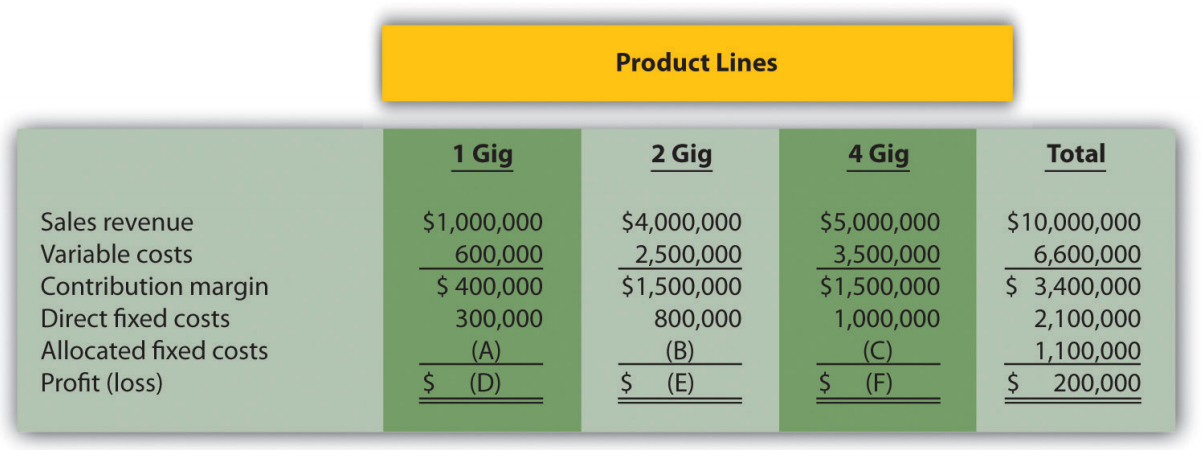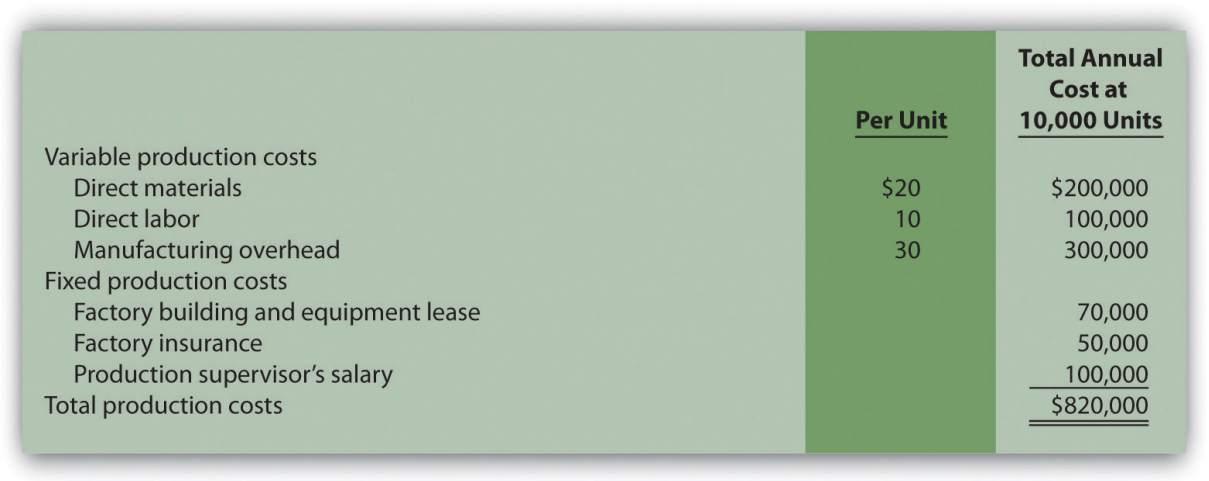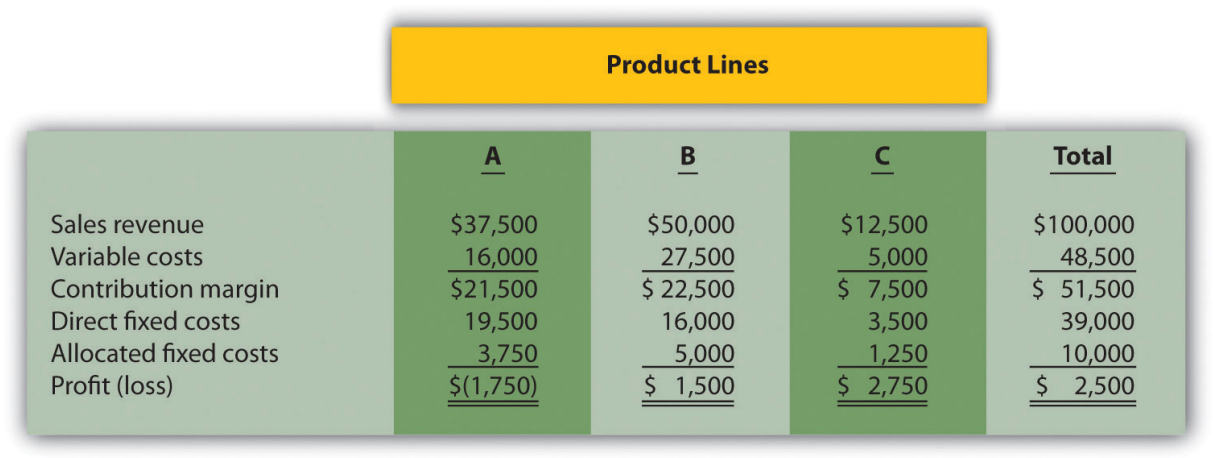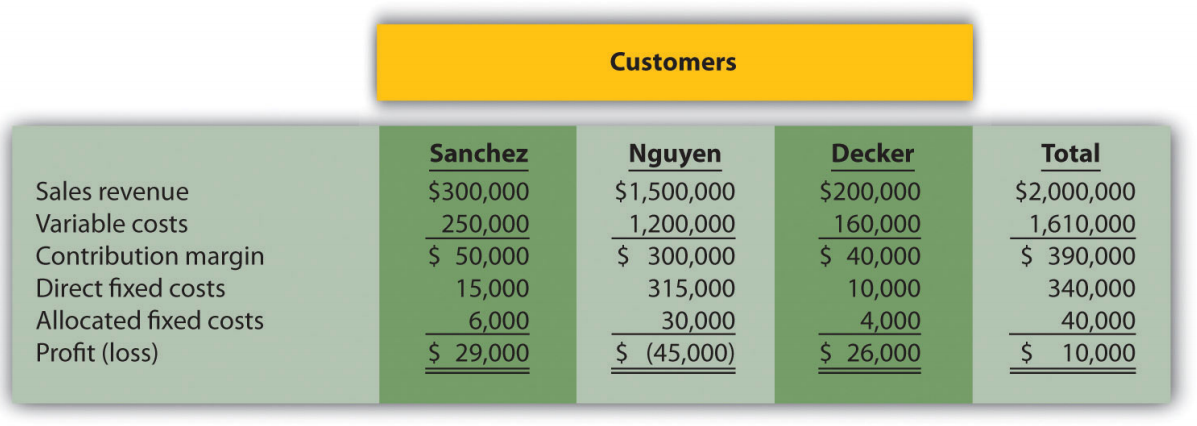59 7. Exercises (Part 1)
-
Last updated
- Dec 28, 2020
Questions
- What are differential revenues and costs?
- What is differential analysis?
- Define what is meant by a “make-or-buy” decision. Describe how differential analysis can be used to assist in making this type of decision.
- Figure 7.2 and Figure 7.3 provide two different formats for presenting the same analysis. Describe the similarities and differences in these two formats.
- What is an avoidable cost?
- Review Note 7.8 “Business in Action 7.1” Why did Salt Lake City choose to outsource the concrete panels to a company in Mexico City even though the library was being constructed in Salt Lake City?
- How is differential analysis used in deciding whether to keep or drop product lines?
- Why are direct fixed costs typically differential costs?
- Why are allocated fixed costs typically not differential costs?
- What is an opportunity cost? Why is an opportunity cost a differential cost?
- Review Note 7.17 “Business in Action 7.2” What did Kmart do with 24 of its stores? Why might Kmart have taken this action?
- How is differential analysis similar for customer decisions and product line decisions?
- Review Note 7.21 “Business in Action 7.3” Why did ABCO Automation, Inc., fire its biggest client even though the client provided close to 60 percent of ABCO’s annual revenue?
- What two important assumptions must be considered when evaluating special order scenarios?
- What is cost-plus pricing?
- Describe the four steps of target costing.
- Describe the five steps used to manage constraints according to the theory of constraints.
- What is a qualitative advantage of keeping unprofitable customers?
Brief Exercises
- Cutting Costs at Best Boards, Inc. Refer to the dialogue at Best Boards, Inc., presented at the beginning of the chapter. How does the vice president of operations, Jim Muller, expect to reduce costs and earn his bonus? What was the flaw in his plan?
- Make-or-Buy Decision. Coffee Mugs, Inc., currently manufactures ceramic coffee mugs. Management is interested in outsourcing production to a reputable manufacturing company that can supply the cups for $2 per unit. Coffee Mugs produces 100,000 mugs each year. Variable production costs are $0.80 and annual fixed costs are $150,000. If production is outsourced, all variable costs and 40 percent of annual fixed costs will be eliminated. Perform differential analysis using the format presented in Figure 9.2 and explain which alternative is best, Alternative 1 (producing internally) or Alternative 2 (outsourcing).
-
Product Line Decision. The following segmented annual income statement is for Flash Drive, Inc.:

For items A, B, and C, assign allocated fixed costs to each product line based on sales revenue for each product line as a proportion of total sales revenue. For example, the 1 Gig product will be assigned 10 percent of allocated fixed costs (= $1,000,000 in 1 Gig sales revenue ÷ $10,000,000 total sales revenue), or $110,000 (=$1,100,000 total allocated fixed costs × 10 percent). For items D, E, and F, calculate the profit or loss for each product line. - Customer Decision. Consulting Group LLC has two customers. Customer One generates $150,000 in income after direct fixed costs are deducted, and Customer Two generates $200,000 in income after direct fixed costs are deducted. Allocated fixed costs total $300,000 and are assigned 30 percent to Customer One and 70 percent to Customer Two based on several different cost drivers. Total allocated fixed costs remain the same regardless of how these costs are assigned to customers. Calculate the amount of allocated fixed costs to be assigned to each customer, and determine the profit or loss for each customer. Should Consulting Group drop Customer Two? Explain.
-
Special Order Decision: Operating with Idle Capacity. Jerseys, Inc., currently produces 10,000 jerseys a year for its regular customers and charges $10 per jersey. Jerseys, Inc., has capacity to produce an additional 5,000 jerseys if sales grow in the future. Variable costs total $6 per jersey and annual fixed costs total $15,000. The city of Rockville recently approached the company and proposed a one-time purchase of 3,000 jerseys for $8 each. Should Jerseys, Inc., accept the proposal? Explain.
-
Cost-Plus Pricing. KJ Home Builders is bidding on a custom home for a potential customer. The company typically charges 15 percent above cost and estimates the home will cost $500,000 to build. Calculate the price bid by KJ Home Builders.
- Constrained Resources. Deal, Inc., produces two types of computers: Vortex and Zoom. The computers are produced in separate departments and sent to the quality testing department before being packaged and shipped. A labor-hour bottleneck has been identified in the quality testing department due to the high skill requirements of the job. Deal, Inc., would like to optimize its use of labor hours by producing the most profitable computer. Based on the information shown, calculate the contribution margin per quality testing labor hour for each product:
Quality Testing Labor Hours Contribution MarginVortex 0.50 $600 Zoom 0.40 $500 - Evaluating Qualitative Factors. Assume your company is considering whether to outsource production. What qualitative factors should be considered before making this decision?
Exercises: Set A
- Make-or-Buy Decision. Wheels, Inc., currently manufactures its own custom rims for automobiles. Management is interested in outsourcing production of these rims to a reputable manufacturing company that can supply the rims for $80 per unit. Wheels, Inc., incurs the following annual production costs to produce 10,000 rims internally.

If production is outsourced, all variable production costs, factory building and equipment lease costs, and factory insurance costs will be eliminated. The production supervisor’s salary cost will remain regardless of the decision to outsource or to produce internally because the supervisor recently signed a long-term contract with Wheels, Inc.
Required:
- Perform differential analysis using the format presented in Figure 9.2. Assume making the rims internally is Alternative 1, and buying the rims from an outside manufacturer is Alternative 2.
- Which alternative is best? Explain.
- Summarize the result of outsourcing production using the format presented in Figure 9.3.
- Compare the format used in requirement a with that of requirement c.
-
Product Line Decision. The following monthly segmented income statement is for Durango Company.

Management is concerned about the losses associated with product line A and is considering dropping this product line. Allocated fixed costs are assigned to product lines based on sales. If product line A is eliminated, total allocated fixed costs are assigned to the remaining product lines, and all variable and direct fixed costs for product line A will be eliminated.
Required:
- Perform differential analysis using the format presented in Figure 9.6. Assume keeping all product lines is Alternative 1, and dropping product line A is Alternative 2.
- Which alternative is best? Explain.
- Summarize the result of dropping product line A using the format presented in Figure 9.7.
- Explain why the loss shown for product line A in the segmented income statement might be misleading to management.
- Customer Decision. The following customer segmented quarterly income statement is for Accounting Associates.

Management is concerned about the significant losses associated with the Nguyen account and would like to drop this customer. Allocated fixed costs are assigned to customers based on sales revenue. If Nguyen is dropped, total allocated fixed costs are assigned to the remaining customers, and all variable and direct fixed costs for the Nguyen account will be eliminated.
Required:
- Perform differential analysis using the format presented in Figure 9.10. Assume keeping all customers is Alternative 1, and dropping the Nguyen account is Alternative 2.
- Which alternative is best? Explain.
- Summarize the result of dropping the Nguyen account using the format presented in Figure 9.12.
- Explain what happened to the profitability of the other two customers as a result of dropping the Nguyen account.
-
Special Order
Decision: Operating with Idle Capacity. The following monthly financial data are for RadioCom, Inc., a maker of handheld VHF radios. RadioCom produces and sells 5,000 radios each month to regular customers.

RadioCom received an offer from the Coast Guard Auxiliary to purchase 1,000 radios next month for $75 per unit. RadioCom can produce up to 7,000 radios a month, so the special order would not affect regular customer sales. Variable costs per radio will remain at $60. This special order will have no effect on monthly fixed costs.
Required:
- Using the differential analysis format presented in Figure 9.13, determine whether RadioCom would be better off rejecting the special order (Alternative 1) or accepting the special order (Alternative 2).
- Summarize the result of accepting the special order using the format presented in Figure 9.14.
-
Special Order Decision: Operating at Full Capacity. The following monthly financial data are for RadioCom, Inc., a maker of handheld VHF radios. RadioCom produces and sells 5,000 radios each month to regular customers.

RadioCom received an offer from the Coast Guard Auxiliary to purchase 1,000 radios next month for $75 per unit. RadioCom can only produce up to 5,000 radios a month, so the special order would result in reduced sales to regular customers. Variable costs per radio will remain at $60. This special order will have no effect on monthly fixed costs.
Required:
- Using the differential analysis format presented in Figure 9.13, determine whether RadioCom would be better off rejecting (Alternative 1) or accepting (Alternative 2) the offer received from the Coast Guard Auxiliary.
- Summarize the result of accepting the special order using the format presented in Figure 9.14.
-
Target Costing. Quality Sounds, Inc., makes speakers and headphones for high-end sound systems. The marketing department has identified a market for a specific type of headphones that Quality Sounds does not currently produce, and expects to be able to sell each pair for $150. Management requires a profit of 45 percent of the selling price.
Required:
Determine the highest cost (target cost) management would be willing to accept to produce this product.
- Constrained Resources. Cycle, Inc., produces three types of bicycles: racer, cruiser, and climber. The bikes are produced in separate departments and sent to the quality testing department before being packaged and shipped. A labor-hour bottleneck has been identified in the quality testing department due to the high skill requirements of the job. Cycle, Inc., would like to optimize its use of labor hours by producing the two most profitable bikes. Information for each bike follows.
| Quality Testing Labor Hours | Price |
Variable Cost
|
|
|---|---|---|---|
| Racer | 1.25 | $1,000 | $400 |
| Cruiser | 1.00 | $500 | $300 |
| Climber | 1.00 | $800 | $450 |
Required:
- Calculate the contribution margin per unit of constrained resource for each product.
- Which two products would Cycle, Inc., prefer to produce and sell to optimize the use of labor hours in the quality testing department?
- Qualitative Factors. For each of the following independent scenarios, identify at least one qualitative factor that should be considered before making the decision.
- A company sells three types of computers (laptops, desktops, and palmtops), all of which are profitable. The company faces a machine-hour bottleneck and plans to eliminate the palmtop product because it has the lowest contribution margin per machine hour.
- A company plans to drop an unprofitable customer.
- A maker of high-end stereo equipment would like to shut down its manufacturing facility and outsource production.

